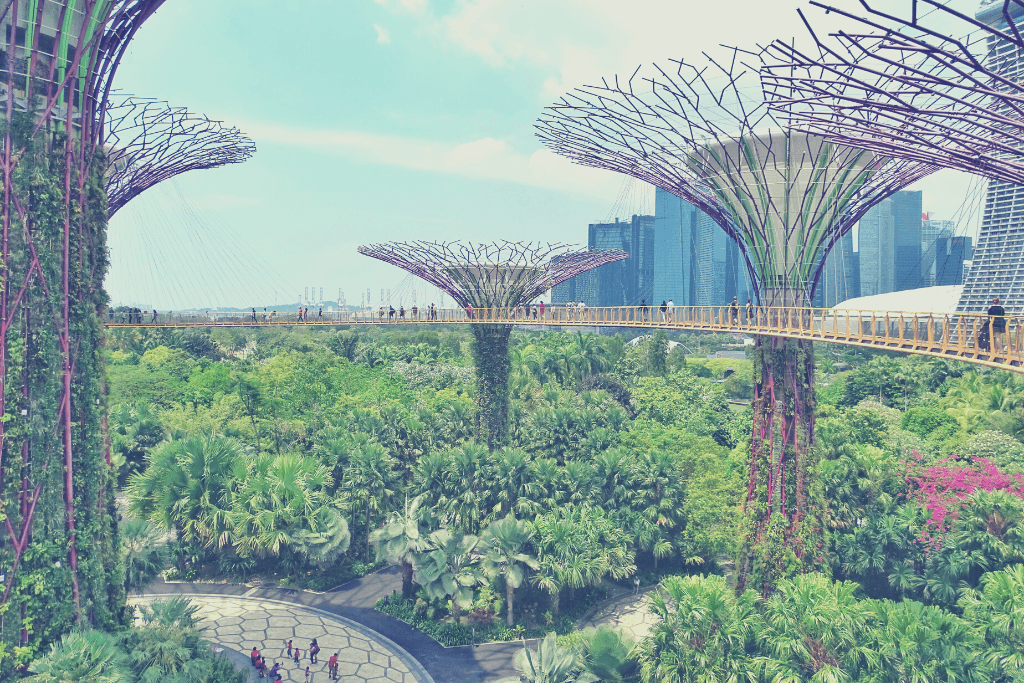Due to the skyrocketing urbanization, industrialization, and population growth globally, our planet is losing its biodiversity at an alarming rate, faster than at any time in human history. Since the beginning of the 20th century, as the cities kept booming, the average population of indigenous species in the majority of significant ecosystems has declined by at least 20 percent.
On the other hand, nature is resilient. Given the right conditions and urban planning strategies, it can thrive even in the densest concrete jungles known to humanity.
Promoting and preserving urban biodiversity is essential for creating sustainable and resilient cities, supporting ecosystem services, enhancing human well-being, and conserving native species in urban areas.
Urban rewilding initiatives aim to restore and integrate natural elements into urban environments, creating more sustainable and biodiverse cities. While the concept is still relatively new, several cities around the world have implemented successful urban rewilding projects.
Singapore

Despite being one of the most densely populated cities in the world, Singapore, a pioneer of urban sustainability, has implemented innovative urban rewilding initiatives. Singapore is nicknamed the “garden city”, or “city in a garden” for good reason: It has transformed abandoned industrial areas into vibrant green spaces, such as the iconic Gardens by the Bay. These spaces not only contribute to urban aesthetics but also provide habitats for wildlife and offer educational opportunities for residents and visitors.
Given its small land area, Singapore is surprisingly rich in biodiversity. According to the Singaporean National Parks Board, the city-state is home to over 40,000 kinds of non-microbial organisms.
London, United Kingdom

London has embarked on an ambitious rewilding project as a part of the London Environment Strategy, with the goal of making half of London green by 2050. The city has been working to increase green spaces, such as parks, gardens, and rooftop plantings, to enhance biodiversity and provide natural habitats for various species. Efforts have been made to reintroduce native plants, improve river habitats, and create wildlife corridors throughout the city.
The city is home to over 14,000 different species of plants, animals, and fungi in its many parks and forests, as well as protected wetlands.
Berlin, Germany

Berlin has embraced urban rewilding through various projects, including the conversion of former airports and rail yards into green spaces. For instance, Tempelhofer Feld, a former airport, has been transformed into a public park and nature reserve. The city has also integrated green roofs, green walls, and vertical gardens into its urban fabric, promoting biodiversity and improving air quality.
Today, Berlin is characterized by its extensive green spaces, including over 2,500 parks, gardens, and forests, all playing a significant role in supporting biodiversity.
Interestingly, about half of Germany’s bees were discovered in Berlin.
San Francisco, United States

San Francisco, which has historically been a crucial center of environmental movements, also implemented urban rewilding initiatives to enhance ecological resilience and promote native biodiversity. This Californian tech and clean energy hub has focused on restoring native habitats, such as wetlands and riparian zones, to provide crucial habitats for local flora and fauna. The reintroduction of native plant species and the creation of green corridors have helped to connect fragmented ecosystems and increase biodiversity within the city.
This vibrant urban biodiversity hotspot, which has the goal of becoming carbon-neutral by 2045, is currently working on its target to achieve 22.6 percent citywide tree canopy coverage by 2040.
Melbourne, Australia

In 2017, Melbourne embraced urban rewilding through the “Nature in the City Strategy” with the goal of promoting a variety of robust and thriving ecosystems that enhance the environment and well-being of Melbourne residents, forming the basis for a sustainable and livable city.
Since then, the city has transformed underutilized spaces, including alleyways and rooftops, into green areas, creating habitats for birds, insects, and other wildlife. Melbourne’s urban forests initiative has also focused on planting native trees and improving urban tree canopy cover to enhance biodiversity and mitigate the urban heat island effect.







